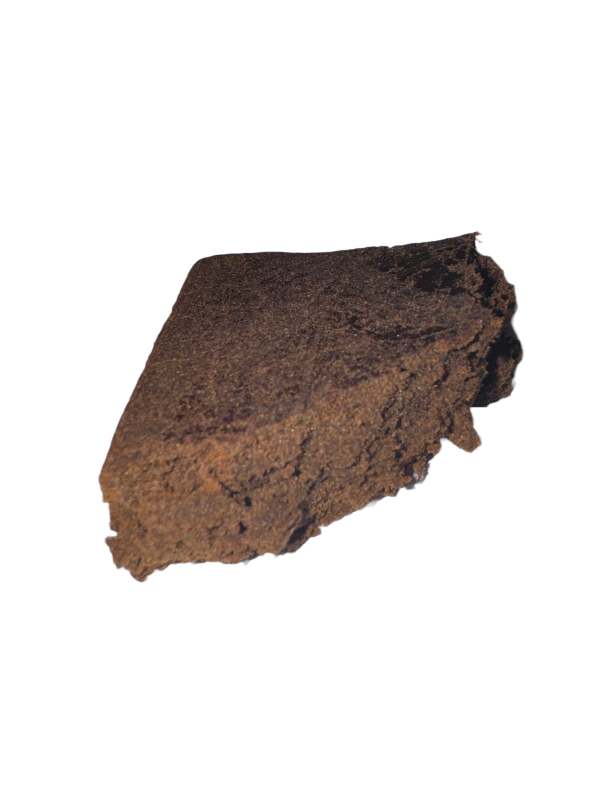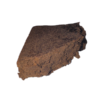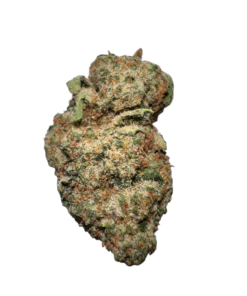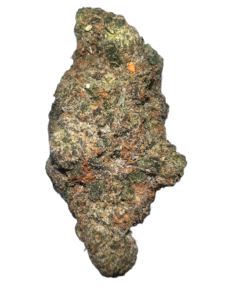Moroccan Commercial Hash – 5g
£65.00 – £380.00Price range: £65.00 through £380.00
Moroccan Hash
Moroccan Hash is a traditional cannabis concentrate that has gained significant popularity for its unique characteristics and effects. It is produced by collecting the resin glands (trichomes) from cannabis plants, which are then pressed into a solid form. This process results in a potent product with a distinct aroma, flavor, and texture.
One of the key reasons for Moroccan Hash’s popularity is its potency. It typically has a higher concentration of cannabinoids, such as THC, compared to other cannabis products. This makes it a preferred choice for users seeking a strong and long-lasting high.
Another unique characteristic of Moroccan Hash is its texture. When properly made, it has a smooth and pliable consistency that makes it easy to handle and consume. This texture is achieved through the traditional production methods used in Morocco, where the resin is hand-pressed and kneaded to create a uniform and compact product.
Overall, Moroccan Hash is prized for its strong effects, unique texture, and rich flavor profile. Its popularity has spread beyond Morocco, making it a sought-after product in the global cannabis market.

History of Moroccan Hash
Moroccan Hash has a rich history that dates back centuries, with its origins deeply rooted in the North African country of Morocco. The history of hashish in Morocco is closely tied to the region’s long-standing cannabis cultivation practices and its cultural significance.
The use of cannabis dates back to ancient times in Morocco, where it was primarily grown for its fibers and medicinal properties. However, it was the discovery of hashish that truly shaped the country’s relationship with the plant. Hashish, also known as hash, is a concentrated form of cannabis made from the resin of the plant’s trichomes.
The production of hashish in Morocco can be traced back to the 18th century when it was first introduced to the region. It is believed that hashish was brought to Morocco by Arab and Moorish traders who traveled through the region, bringing with them the knowledge of cannabis cultivation and processing techniques.
Over time, hashish became an integral part of Moroccan culture, particularly in the Rif Mountains region, where cannabis cultivation thrived. The Rif Mountains, located in northern Morocco, have a long history of cannabis cultivation, thanks to the region’s favorable climate and soil conditions.
Production Process
The production process of Moroccan Hash is a time-honored tradition that involves several meticulous steps, from harvesting the cannabis plants to processing the resin into the final product. Here’s a detailed explanation of how Moroccan Hash is made using traditional techniques:
- Harvesting: The process begins with the careful harvesting of cannabis plants, typically during the flowering stage when the resin glands (trichomes) are at their peak potency. The plants are harvested by hand to ensure the resin glands remain intact.
- Drying and Curing: After harvesting, the cannabis plants are dried and cured to remove excess moisture and enhance the flavor and potency of the resin. This process is crucial for producing high-quality hashish.
- Separating the Resin: Once the plants are dried, the next step is to separate the resin from the plant material. This is typically done using traditional methods such as hand rubbing or sieving.
- Hand Rubbing: Hand rubbing is a technique where the resin glands are gently rubbed off the plant material using hands or gloves. This method requires skill and experience to avoid damaging the resin glands.
- Sieving: Sieving is another common method used to separate the resin from the plant material. In this method, the dried cannabis buds are gently rubbed over a fine mesh screen, allowing the resin glands to pass through while the plant material is collected separately.
- Pressing: Once the resin glands are collected, they are pressed into a solid form to create hashish. The resin is typically wrapped in a cloth or a piece of fabric and pressed using a combination of pressure and heat. This process helps to compress the resin into a dense, solid mass.
- Aging: After pressing, the hashish is left to age for a period of time to allow the flavors to mature and the texture to stabilize. This aging process is important for enhancing the overall quality and potency of the final product.
- Packaging: Once the aging process is complete, the hashish is ready for packaging. It is typically wrapped in plastic or paper and sealed to preserve its freshness and potency.

Overall, the production of Moroccan Hash is a labor-intensive process that requires skill, patience, and attention to detail. Despite the availability of modern extraction methods, many producers in Morocco continue to use traditional techniques to preserve the authenticity and quality of this ancient cannabis product.
In addition to its historical significance, Moroccan Hash has played a crucial role in the social and cultural fabric of the country. It has been used for various purposes, including religious ceremonies, social gatherings, and traditional medicine. In many parts of Morocco, hashish is considered a symbol of hospitality and is often shared among friends and family.
Traditional production methods of Moroccan Hash are deeply ingrained in the country’s culture and have been passed down through generations. The process typically involves hand-rubbing cannabis plants to collect the resin, which is then pressed into a solid form. This labor-intensive method requires skill and expertise, and the resulting product is highly prized for its quality and potency.
In recent years, the production and sale of Moroccan Hash have faced increasing scrutiny due to international pressure to combat drug trafficking. Despite this, the tradition of hashish production remains deeply rooted in Moroccan culture, and it continues to be a significant part of the country’s heritage.
Characteristics of Moroccan Hash
Moroccan Hash is renowned for its unique characteristics, which set it apart from other cannabis products. From its distinct appearance and texture to its potent effects, Moroccan Hash offers a truly unique experience for cannabis enthusiasts.
Appearance: Moroccan Hash is typically dark brown or black in color, with a glossy exterior that reflects its high resin content. It is often shaped into small bricks or patties, depending on the method of production. The surface of Moroccan Hash is smooth and shiny, with a texture that can range from soft and pliable to hard and brittle, depending on the quality and processing methods used.
Texture: The texture of Moroccan Hash is one of its defining features. When properly made, it has a smooth and pliable consistency that makes it easy to handle and manipulate. This unique texture is achieved through the traditional production methods used in Morocco, which involve hand-pressing and kneading the resin to create a uniform and compact product.
Aroma: Moroccan Hash is known for its rich and aromatic scent, which is often described as earthy, spicy, and slightly sweet. The aroma of Moroccan Hash can vary depending on the strain of cannabis used and the production methods employed. Some varieties may have a more pungent aroma, while others may be more subtle and nuanced.
Potency: One of the most significant characteristics of Moroccan Hash is its potency. Due to its high concentration of cannabinoids, particularly THC, Moroccan Hash is known for its strong and long-lasting effects. It is often preferred by users seeking a powerful and immersive high that is different from the effects of smoking or vaping dried cannabis flowers.
Unique Effects: Moroccan Hash is prized for its unique effects, which are often described as more intense and sedating compared to other cannabis products. The high from Moroccan Hash is typically characterized by a deep sense of relaxation and euphoria, making it a popular choice for evening or nighttime use. Additionally, some users report that Moroccan Hash has a more pronounced physical and body-focused high, making it ideal for alleviating pain and muscle tension.
Overall, the characteristics of Moroccan Hash make it a standout product in the world of cannabis. Its unique appearance, texture, aroma, potency, and effects all contribute to its popularity among cannabis enthusiasts seeking a premium and authentic cannabis experience.

Popularity and Consumption
Moroccan Hash has a long history of popularity both in Canada and globally, thanks to its unique characteristics and effects. In Canada, where cannabis legalization has created a booming market, Moroccan Hash remains a sought-after product among cannabis enthusiasts.
Popularity in Canada: Since the legalization of cannabis in Canada, there has been a growing interest in cannabis products, including concentrates like Moroccan Hash. Many consumers in Canada are drawn to the potency and unique effects of Moroccan Hash, making it a popular choice among both recreational and medical users.
Global Popularity: Moroccan Hash is not only popular in Canada but also enjoys widespread popularity around the world. Its reputation for quality and potency has made it a favorite among cannabis connoisseurs and enthusiasts everywhere. In countries where cannabis is legal or decriminalized, Moroccan Hash can often be found in dispensaries and cannabis clubs.
Consumption Methods: Moroccan Hash can be consumed in a variety of ways, both traditional and modern. Some of the traditional methods of consuming Moroccan Hash include:
- Smoking: One of the most common methods of consuming Moroccan Hash is by smoking it. It can be smoked in a pipe, a bong, or mixed with tobacco in a joint or a spliff. Smoking Moroccan Hash provides a fast-acting and potent high, making it a popular choice among users looking for immediate effects.
- Vaporizing: Vaporizing is another popular method of consuming Moroccan Hash. Vaporizers heat the hash to a temperature where the cannabinoids are released as a vapor, which can then be inhaled. Vaporizing is considered a healthier alternative to smoking, as it produces fewer harmful byproducts.
- Edibles: Moroccan Hash can also be used to make edibles, such as cookies, brownies, and candies. The hash is typically decarboxylated (heated) to activate the cannabinoids before being added to the recipe. Edibles provide a longer-lasting and more intense high compared to smoking or vaporizing.
- Dabbing: Dabbing is a method of consuming cannabis concentrates, including Moroccan Hash. It involves heating a small amount of hash on a hot surface, typically a nail or a banger, and inhaling the vapor through a dab rig. Dabbing provides a fast and intense high, making it popular among experienced users.
Modern Trends: In addition to traditional methods, there are also modern trends in consuming Moroccan Hash. One such trend is the use of specialized hash pipes or “hot knives” to smoke the hash. These methods are often preferred by users who appreciate the ritualistic and social aspects of smoking hash.
Overall, the popularity of Moroccan Hash in Canada and globally is a testament to its unique characteristics and effects. Whether consumed through traditional methods or modern trends, Moroccan Hash continues to be a favorite among cannabis enthusiasts seeking a premium and authentic cannabis experience.
Medical Benefits
Moroccan Hash, like other cannabis products, is believed to offer a range of potential medical benefits, primarily due to its high concentration of cannabinoids like THC and CBD. While more research is needed to fully understand the extent of these benefits, there is evidence to suggest that Moroccan Hash may be effective in treating certain medical conditions.
Pain Relief: One of the most well-known potential medical benefits of Moroccan Hash is its ability to provide pain relief. Studies have shown that cannabinoids, such as THC and CBD, have analgesic properties that can help alleviate both acute and chronic pain. This makes Moroccan Hash a promising option for individuals suffering from conditions like arthritis, multiple sclerosis, and fibromyalgia.
Relaxation and Stress Relief: Moroccan Hash is also believed to have relaxing and stress-relieving effects, which can be beneficial for individuals dealing with anxiety, depression, and other mood disorders. The calming effects of Moroccan Hash may help promote a sense of well-being and relaxation, making it a potential treatment option for these conditions.
Appetite Stimulation: Another potential benefit of Moroccan Hash is its ability to stimulate appetite. This can be particularly useful for individuals undergoing chemotherapy or suffering from conditions like HIV/AIDS, where appetite loss and weight loss are common side effects. THC, one of the main cannabinoids in Moroccan Hash, is known to stimulate appetite and may help improve food intake in these patients.
Anti-inflammatory Properties: Moroccan Hash contains cannabinoids that have anti-inflammatory properties, which can be beneficial for individuals with inflammatory conditions like arthritis, Crohn’s disease, and inflammatory bowel disease. By reducing inflammation, Moroccan Hash may help alleviate symptoms and improve quality of life for these patients.
Neuroprotective Effects: Some studies suggest that cannabinoids found in Moroccan Hash may have neuroprotective effects, meaning they could potentially protect the brain from damage caused by conditions like Alzheimer’s disease, Parkinson’s disease, and traumatic brain injury. While more research is needed, this potential benefit makes Moroccan Hash an intriguing area of study in the field of neurology.
While there is growing evidence to support the potential medical benefits of Moroccan Hash, it is important to note that cannabis products affect each individual differently. It is always recommended to consult with a healthcare professional before using Moroccan Hash for medical purposes, especially if you are currently taking medication or have a pre-existing medical condition.
| Choose an option | Eighth/s(3.5 Grams), Half Oz (14 grams), Ounce/s(28 Grams), 2 oz (56g) |
|---|
Be the first to review “Moroccan Commercial Hash – 5g” Cancel reply
Related products
FLOWER
FLOWER
FLOWER
FLOWER
EDIBLES
FLOWER
FLOWER
FLOWER











Reviews
There are no reviews yet.